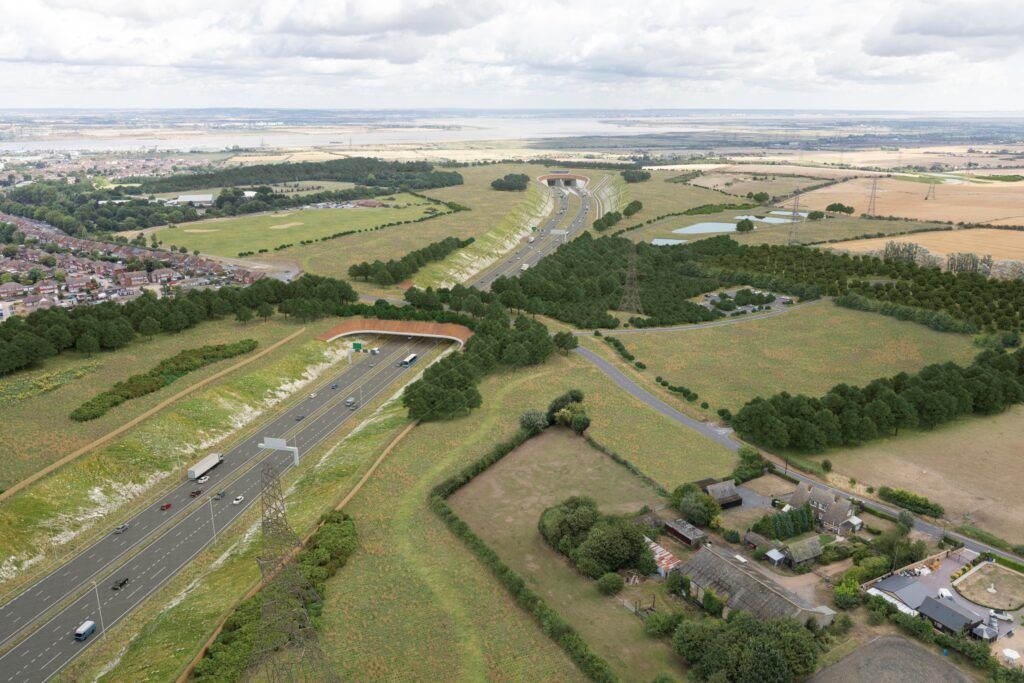Driving low-carbon construction with practical delivery at the heart
The recent government approval of the Lower Thames Crossing marks a significant moment for UK infrastructure. As the most ambitious road project in a generation, it promises not just to ease long-standing congestion at Dartford, but to set a new benchmark for how major schemes can be delivered in a low-carbon, environmentally responsible way.
At euroloo, we welcome the opportunity to support projects like this through our ecowelfare sub-brand – delivering practical, low-emission welfare solutions that align with the green ambitions of nationally significant infrastructure projects.
A smarter, cleaner way forward for national infrastructure
The Lower Thames Crossing will connect the A2 in Kent to the A13 and M25 in Essex, creating a vital new link across the Thames via the UK’s longest road tunnel. It aims to almost double road capacity east of London, improving journey times and reliability for millions of drivers, while supporting the country’s long-term economic resilience.
But the project’s focus goes far beyond transport. National Highways has committed to a 70% reduction in construction emissions by embedding carbon-cutting measures into every stage of delivery. This includes the use of low-carbon concrete and steel, hydrogen-powered plant, and a full commitment to emerging green technologies and materials.
The design also prioritises biodiversity and public access, with six times more green space being created than road, more than one million trees planned, and a range of new parks, bridges, and active travel routes to encourage walking, cycling and habitat connection.
Supporting sustainability through smart welfare provision
At euroloo, we believe that sustainability must go hand-in-hand with practicality – and that’s exactly what our ecowelfare range is designed to deliver. From solar-powered welfare units to energy-efficient hybrid options, our products reduce emissions, limit fuel usage, and support compliance with evolving environmental targets across construction and infrastructure sectors.
The scale and ambition of the Lower Thames Crossing makes it an ideal fit for our approach. With construction expected to begin as early as 2026, the need for reliable, low-emission support services will be critical from the outset. Our welfare units are already being deployed on comparable projects across England, helping to reduce site emissions while maintaining high standards for user comfort and regulatory compliance.
Enabling real change on the ground
This project sets a new precedent for how major infrastructure can be delivered – not just in how it’s constructed, but in how the entire supply chain collaborates to support carbon reduction and environmental progress.
As the sector moves further towards net zero, we’re proud to contribute in a way that is both scalable and meaningful. The ecowelfare range is already in use on sites where emissions, energy use, and local impact are key considerations, and we are committed to continuing that support on future-facing projects such as the Lower Thames Crossing.
With national attention focused on the environmental impact of large-scale construction, this is a timely and necessary shift. From green bridges to green skills, and from sustainable supply chains to smarter site support, the Lower Thames Crossing offers a template for what responsible infrastructure should look like.
Looking ahead
We’re excited about the future of this project and our role in helping to deliver it responsibly. As delivery partners prepare for main works and site mobilisation, we remain ready to support with dependable, low-emission welfare facilities tailored to meet both site needs and sustainability targets.
To learn more about our ecowelfare range and how we can support your project, get in touch with our team or visit https://www.ecowelfare.com
